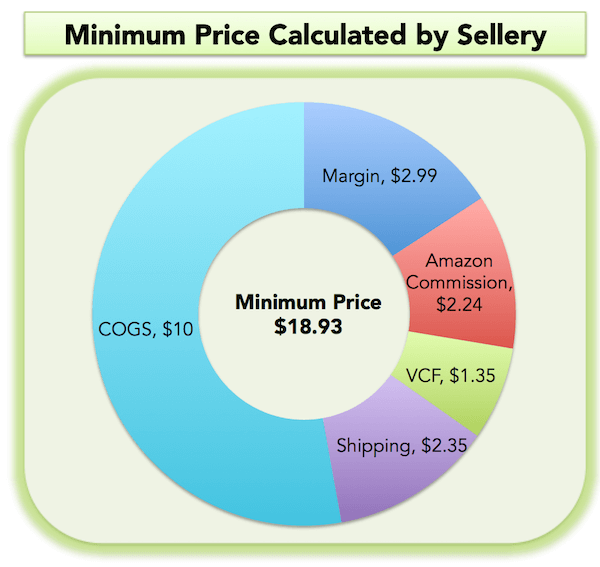Keep reading to find out how Sellery’s Minimum Price can save your business from disaster..
Minimum Price is not Floor Price
Sellery’s Minimum Price is not simply a floor price. A floor price is a static value that you set. Sellery’s dynamic Minimum Price is calculated based on a variety of factors and is constantly updated and used to make sure that you never sell at a loss.
Sellery’s minimum price is calculated based on these factors:
- Your cost of goods sold – Sellery estimates your item costs when it imports your Amazon inventory for the first time. Any costs that need to be updated can be edited one-by-one, or in bulk with an easy file upload.
- Estimated shipping costs.
- Estimated Amazon fees.
- Your desired profit margin/markup – As you change your desired profit margin or markup, Sellery will update the minimum price, automatically. And you can have a different margin for every item in your inventory (if you want).
Minimum Price in Action
Let’s look an item that cost a Sellery user $10.
They desire a 20% margin. Sellery estimated the shipping costs of the item at $2.35, and the Amazon commission at $2.24 and the VCF at $1.35:

Respecting Your Minimum Price
Even if you create a Pricing Rule that sets a price below an item’s calculated Minimum Price, Sellery will respect that Minimum Price. Let’s take a look at an example:
In this example we’ve tried to create a Pricing Rule that sets our price to $1000 below our Minimum Price.
As you can see, when Sellery tries to price this item, it still respects our Minimum Price, ensuring that we don’t sell at a loss.
But Sellery’s Minimum Price is more than just a way to keep your items from being priced too low. Try using Minimum Price in your competition filters to ignore sellers who are selling at a very low price. If you can’t beat them, ignore them!